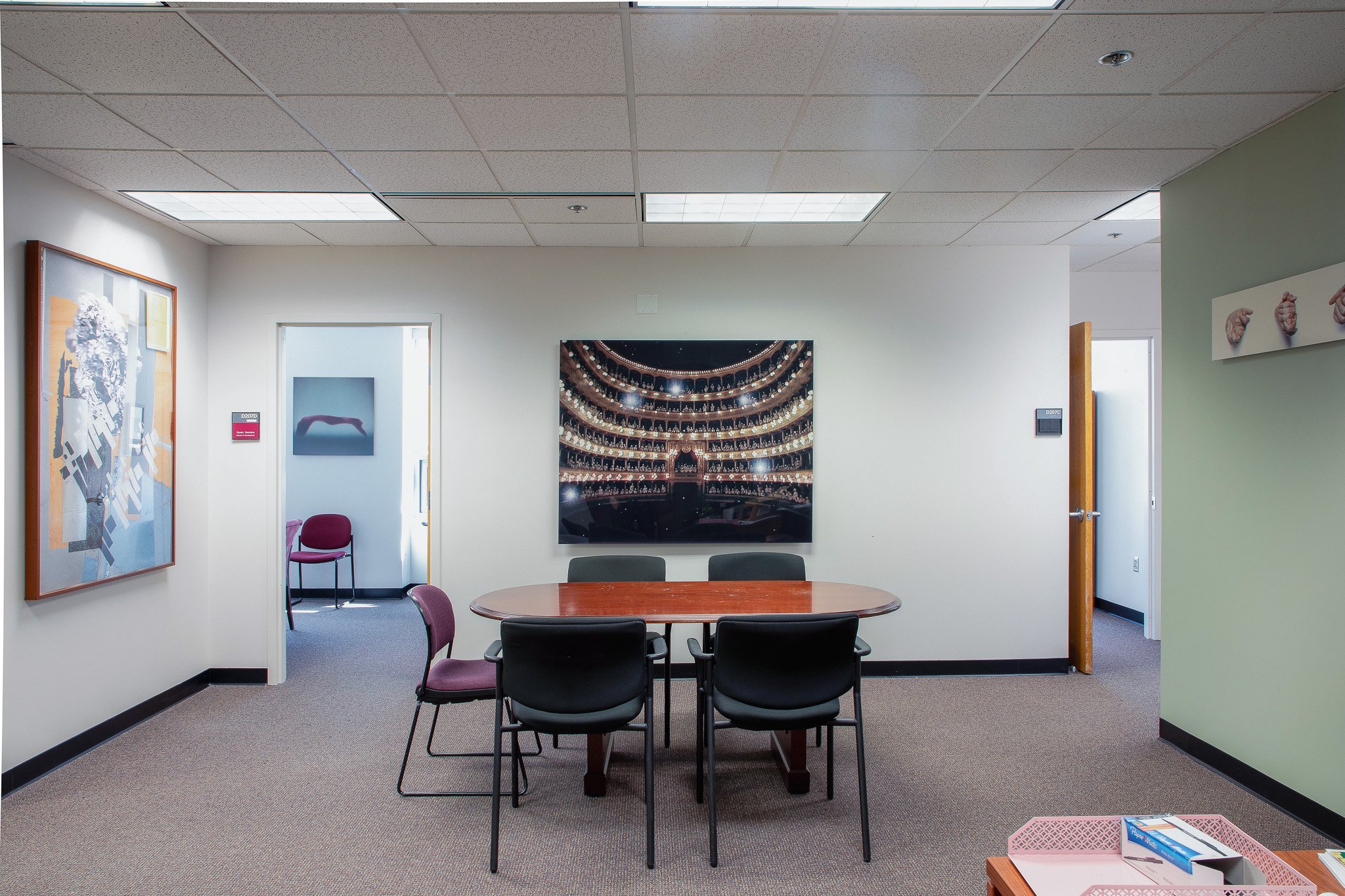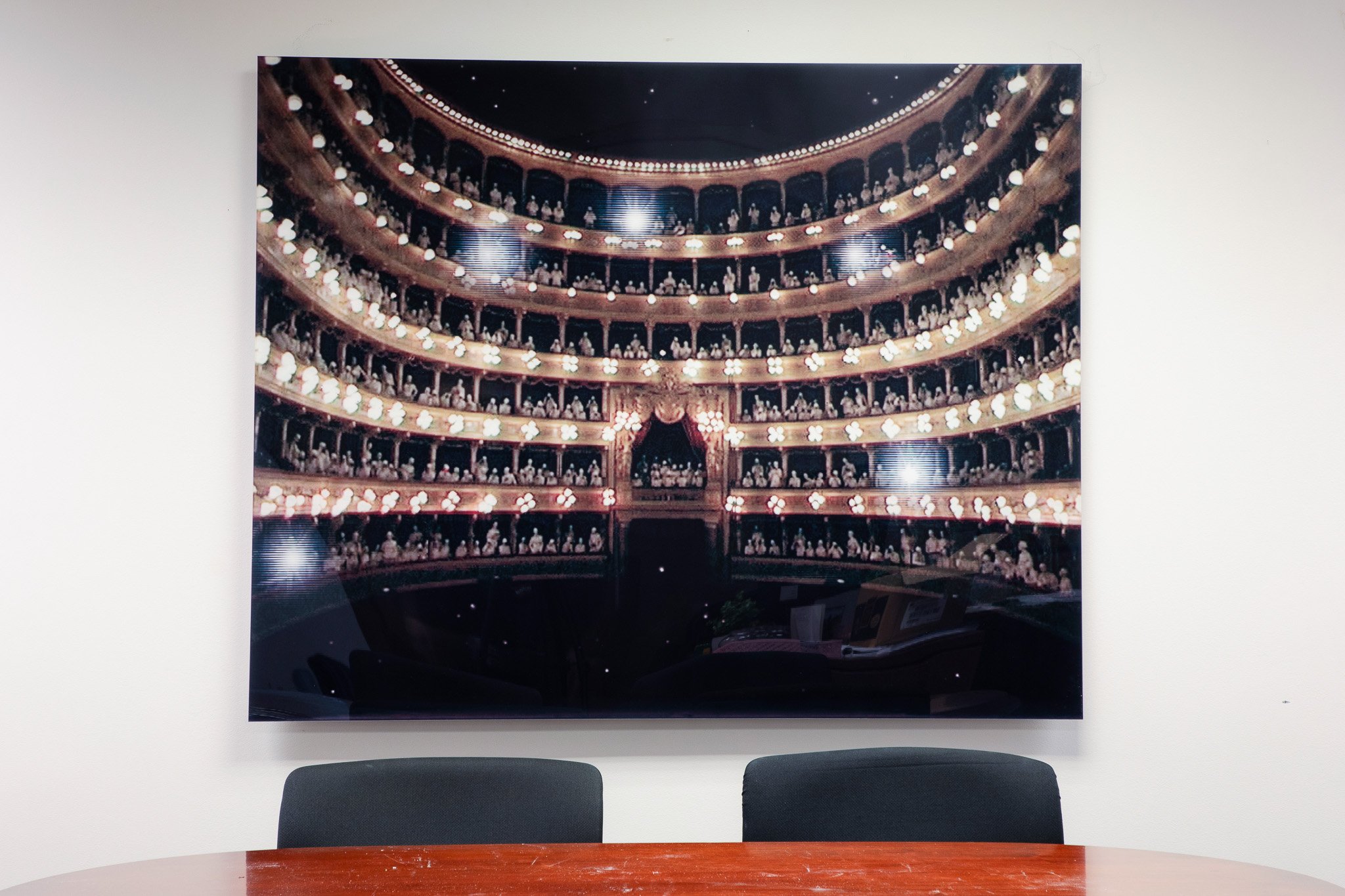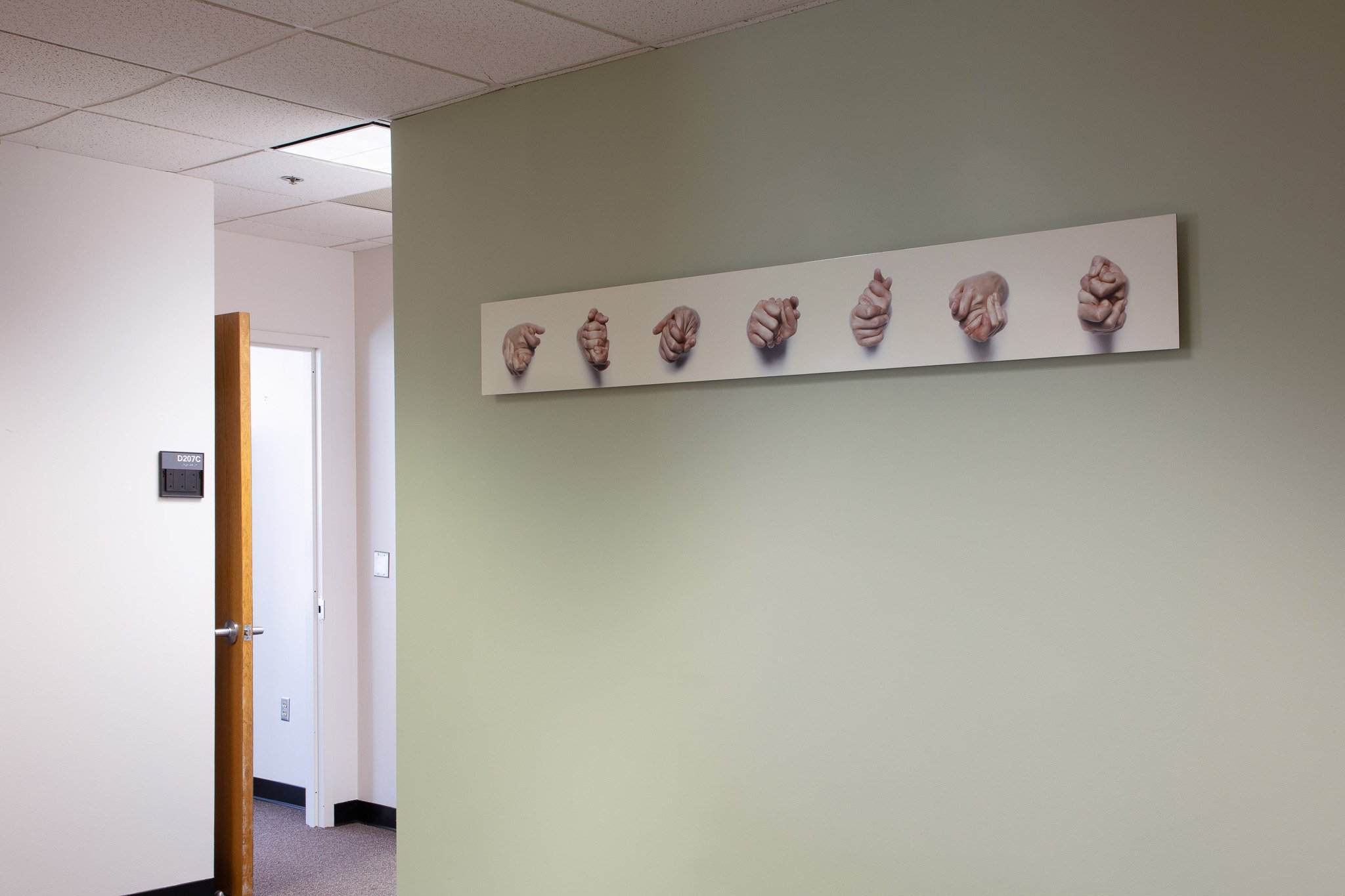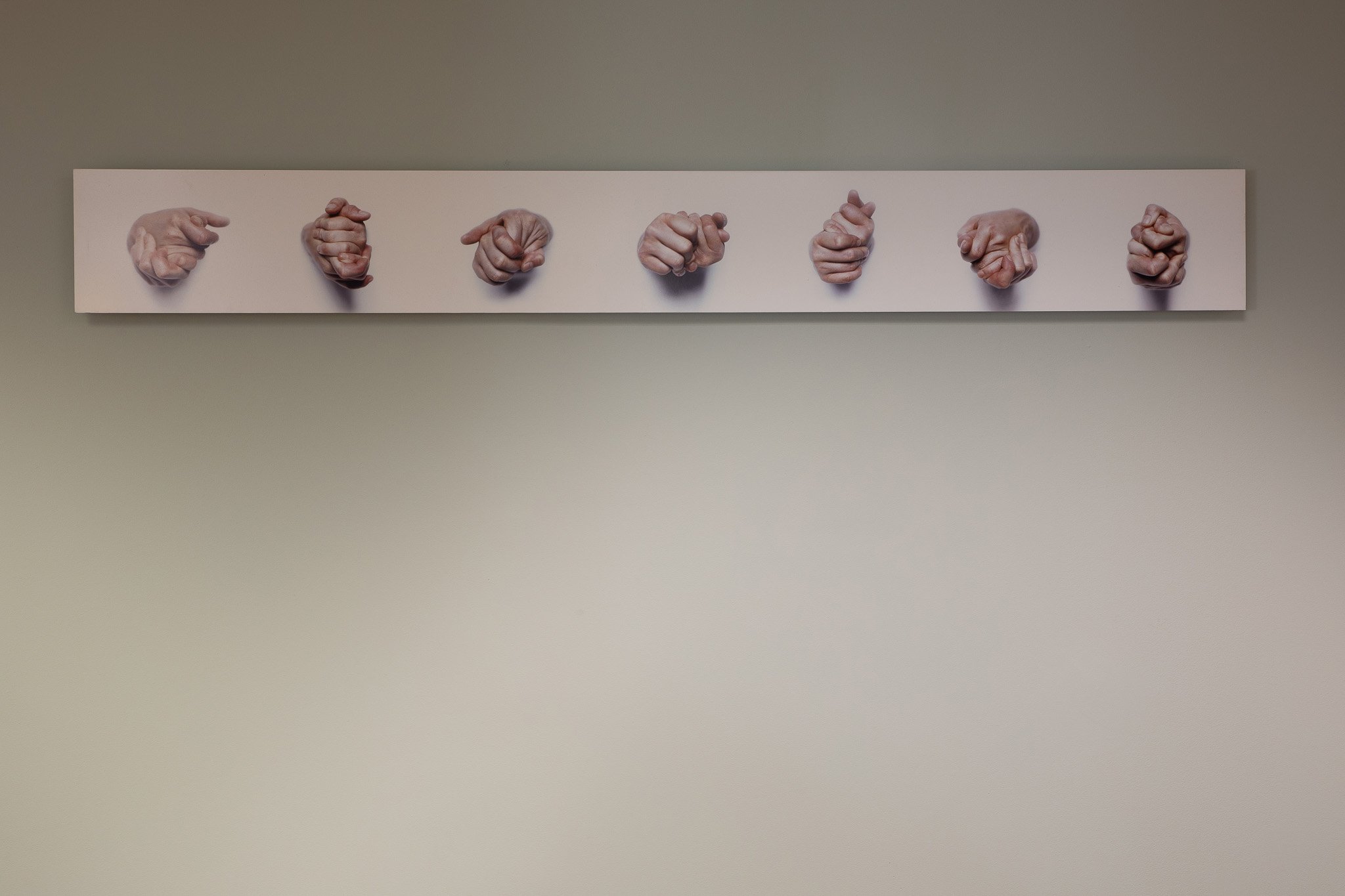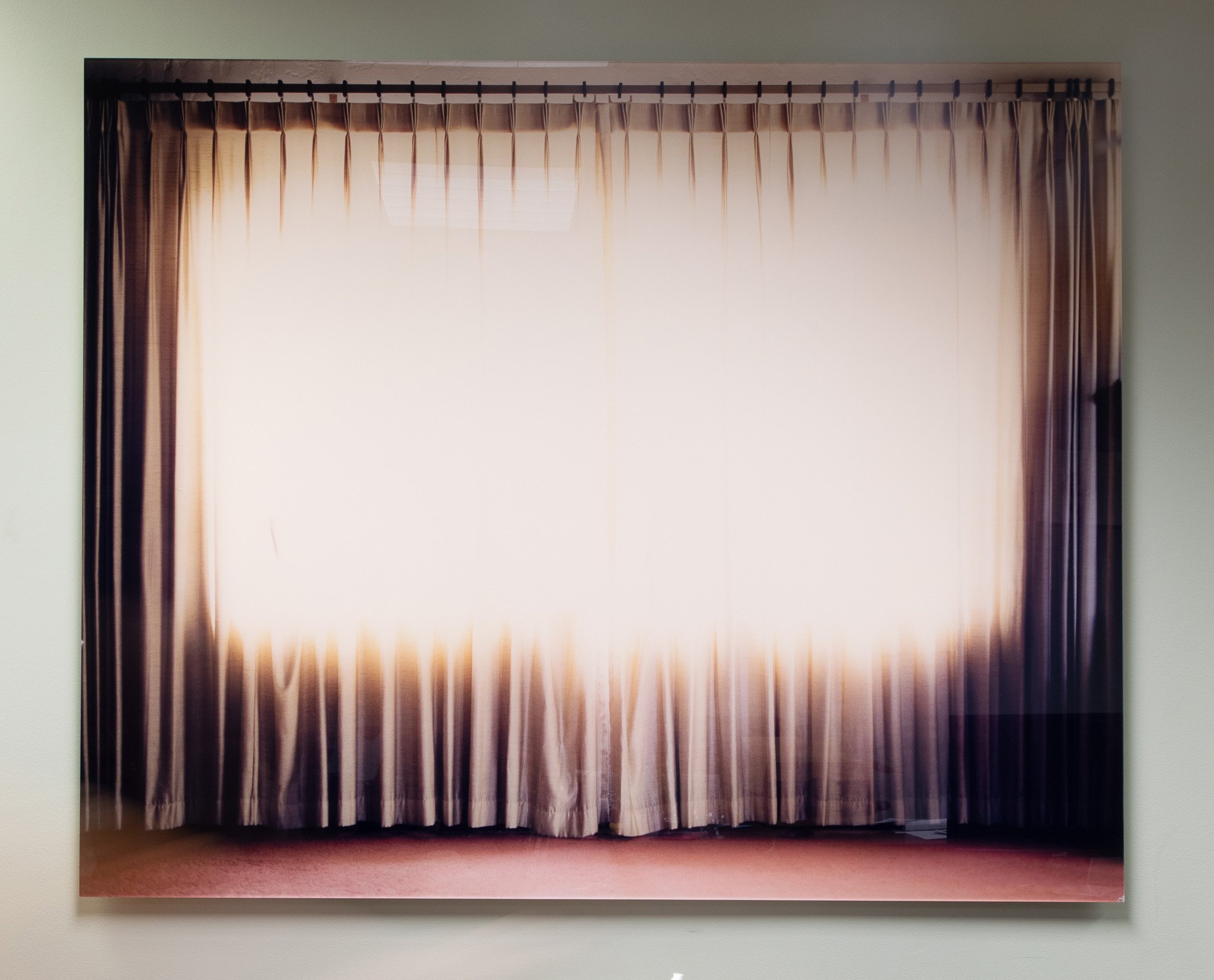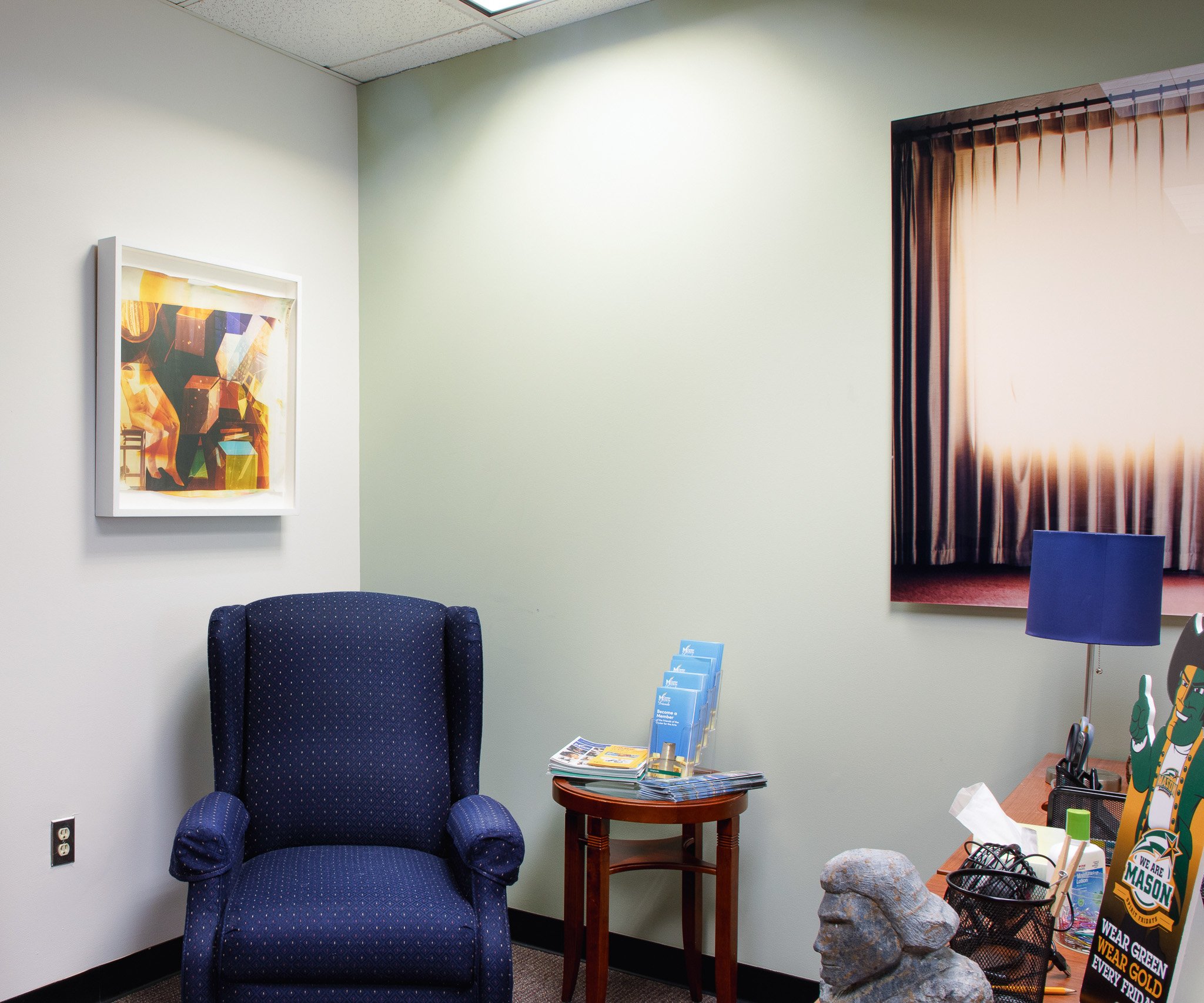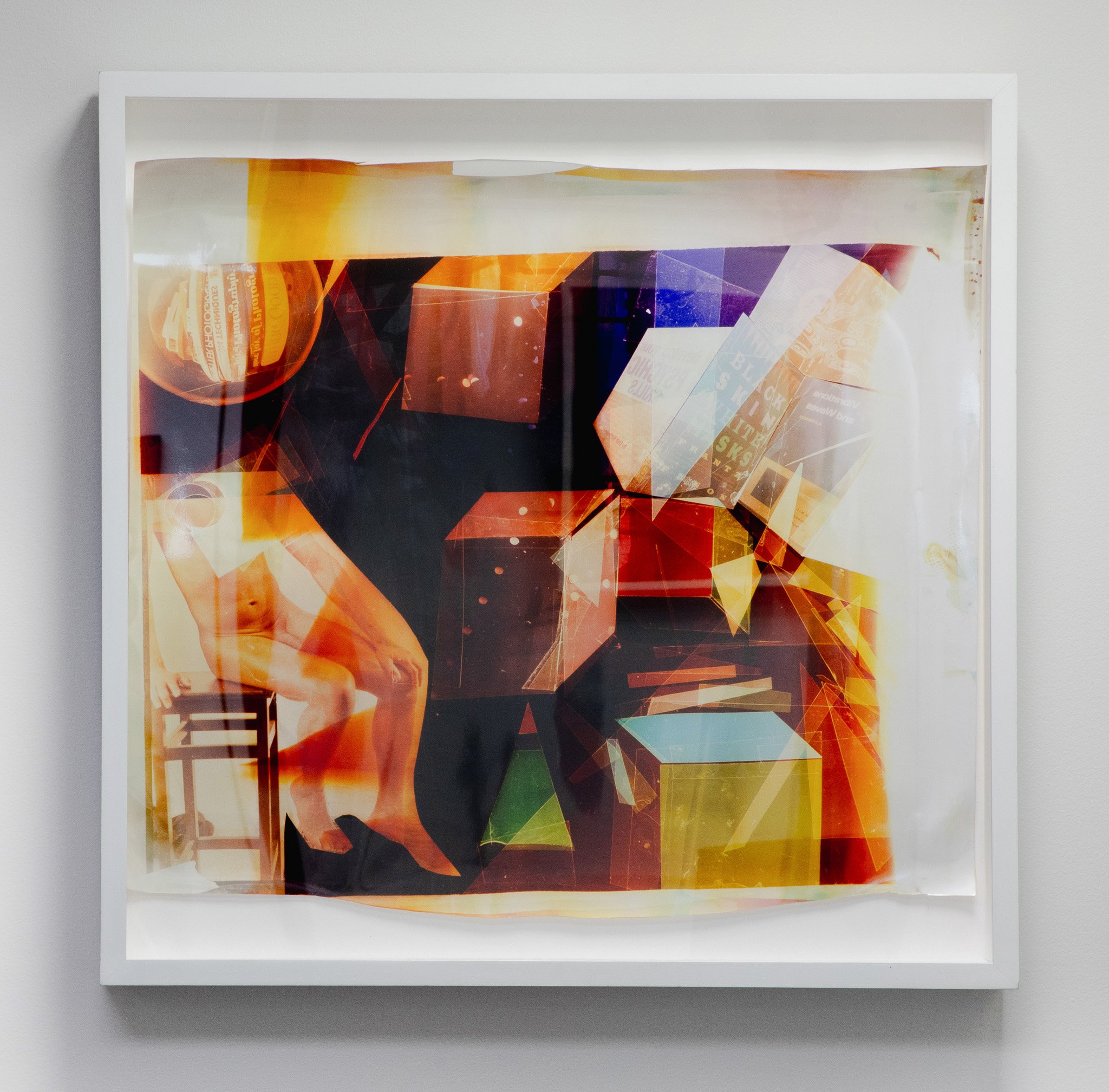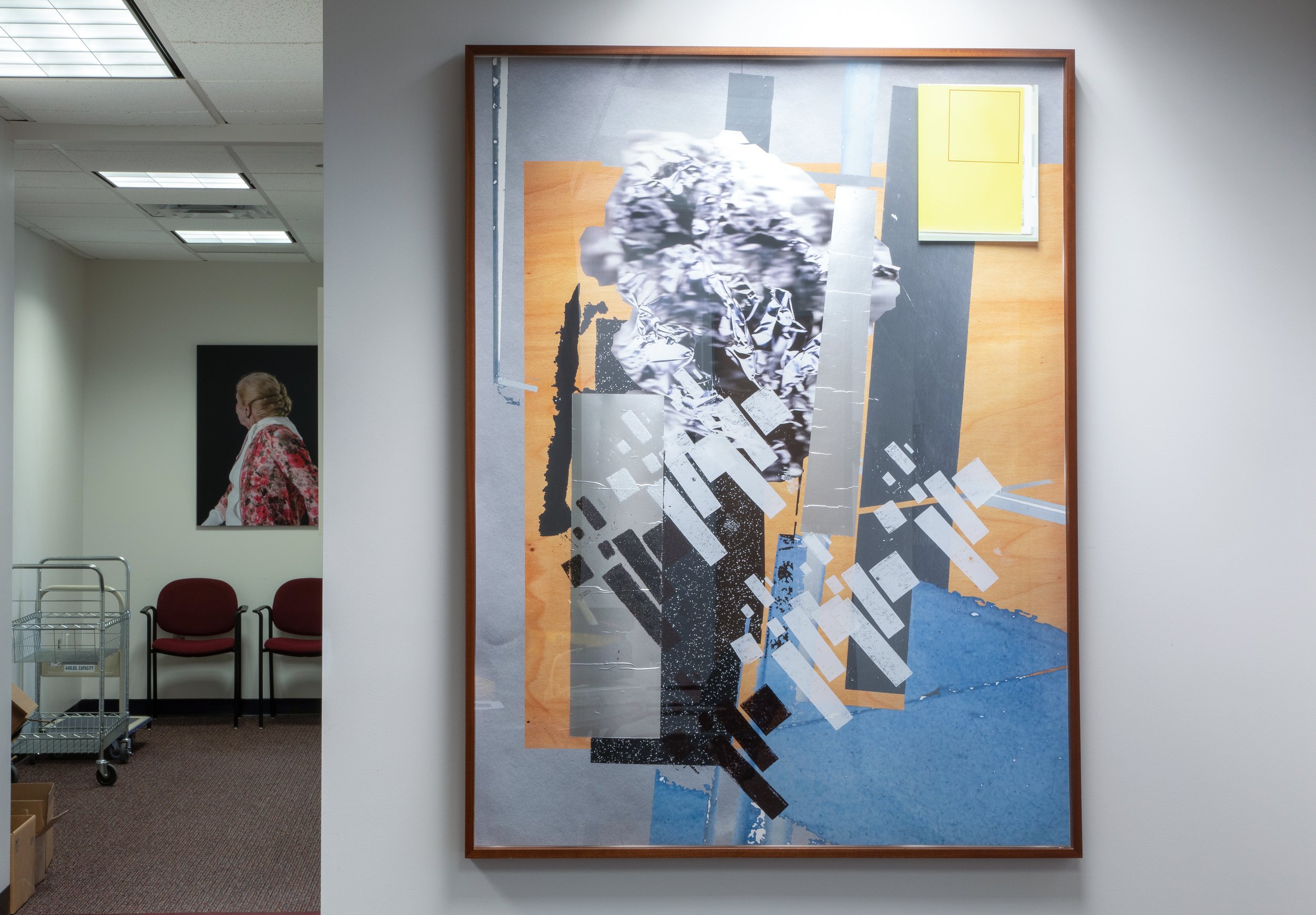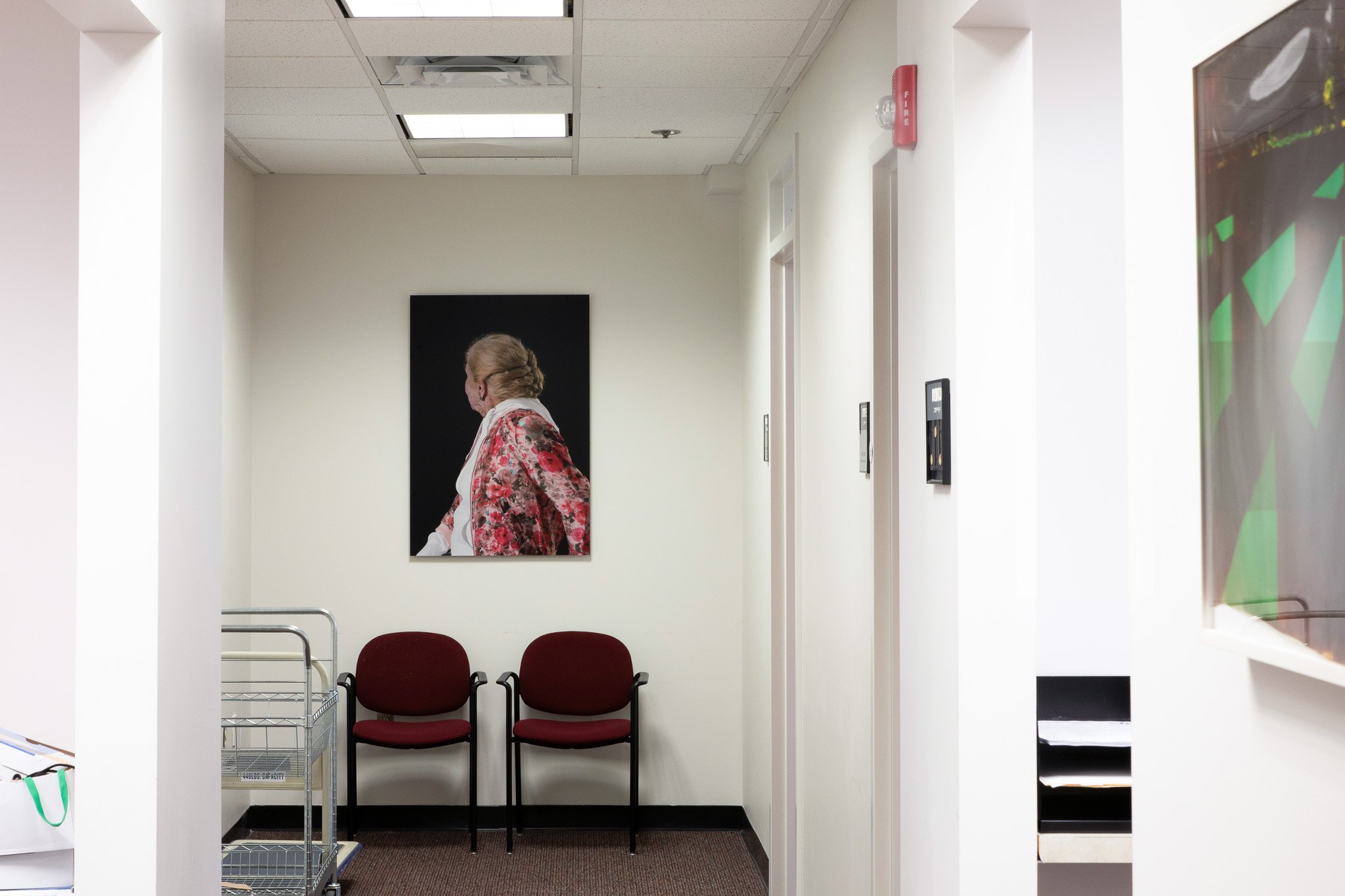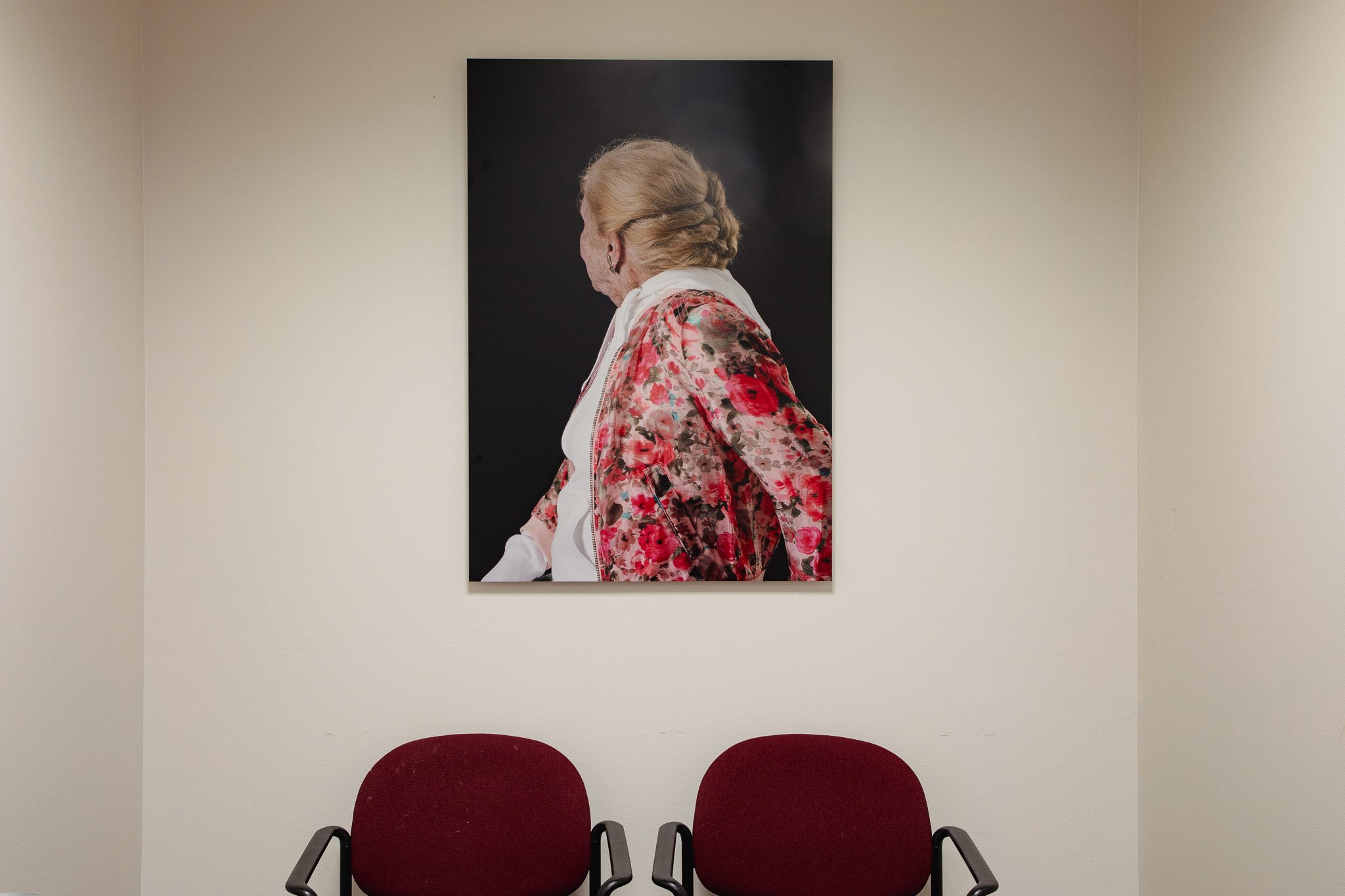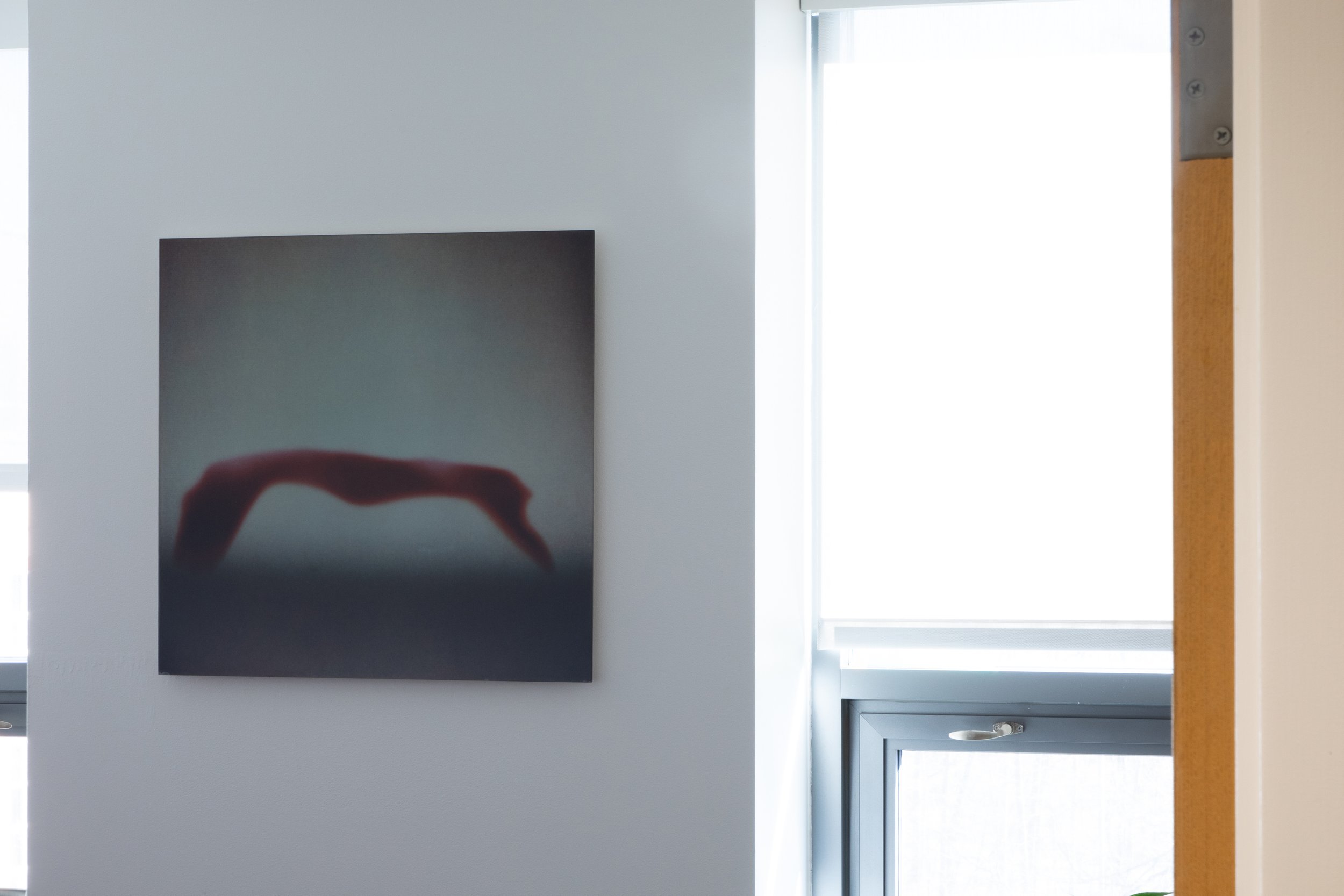George Mason University Art Collection
The George Mason University Art Collection, displayed in various offices and spaces around campus, primarily consists of gifts from alumni and friends, showcasing diverse tastes and collecting interests. It encompasses paintings, antiques, sculpture, graphic media, and objets d'art. Most paintings stored on the Fairfax campus are available for loan to qualifying administrative departments.
Visitors interested in viewing specific objects from the art collection can inquire and reach out to the collection manager for further assistance.
To donate to the University Art Collection, please contact University Curator, Donald Russell (mailto: drusse10@gmu.edu)
Collection Highlights
African Art
Art from Africa embodies a rich tapestry of multifaceted expressions, deeply rooted in its diverse and multicultural heritage. The Mason African collection delves into the material culture hailing from eight distinct African nations: Nigeria, Sierra Leone, Burkina Faso, Mali, Kenya, Tanzania, Côte d'Ivoire, and Liberia.
Neapolitan School : An Eruption of Vesuvius
In 2002, George Mason University received a donation from Robert E. Pugh, a collection of chromolithographs with a unique history. These chromolithographs were once the property of the Proprieta Artistica Leteraria D'Melio. The subject of these remarkable prints centers around the dramatic eruption of Vesuvius in March 1834.
Haitian Paintings
This stunning and varied collection of Haitian painting was donated to the George Mason Art Collection in recent years by David A. Kravitz, retired Professor in the School of Business and son of the late Boris Kravitz. Painted in vibrant colors, the works present an idyllic vision of Haiti, emphasizing lush tropical landscapes, picturesque maritime imagery, quaint scenes of everyday peasant life, and themes from Haitian Vodou rituals.
Carlos & Samuel by John Sonsini
John Sonsini is known for his deep exploration of male subjects, and his subjects include gay and non-gay individuals, working-class men, Latino immigrants, and day laborers from Los Angeles street corners.
Plaster Cast
The acquisition and research of plaster casts from the Metropolitan Museum of Art has been a decade-long endeavor spearheaded by Dr. Carol Mattusch, the Mathy Professor of Art History. This interdisciplinary project has united students, scholars, artists, and individuals from diverse backgrounds, fostering collaboration in the research, conservation, handling, and cataloging of approximately 70 plaster casts now housed at George Mason University.
Put the I into Civic by Linda Hesh
For this public interactive artwork, you are invited to stand in the space of the missing "i" in the C_vic sculpture to Put the I into Civic. This project asks you to consider: What do you expect from your government? What do you appreciate? What might be your contribution, your Civic Duty or Civic Pleasure?
Photographed portraits along with the participant's opinion about what Civic means to them will become part of www.reimaginecivic.com by posting with #reimaginecivic or by going to the website to upload images directly.
Individual Artist Collections
Carroll Sockwell
Sockwell's six large-scale drawings, titled Grey Compositions, feature a cacophony of black charcoal marks dancing over smoke-like expanses of grey and brown. Viewed together, the abstract works' map-like graphic notations suggest an epic visual poem or musical score.
Stephen Sacklarian
Sacklarian's paintings are characterized by biomorphic forms dominating the foreground against angular "room-like" backgrounds or dark color fields. Employing perspective and composition, he juxtaposed vivid biomorphic shapes with unidentifiable geometric rooms.
Salvador Dalí
Salvador Dalí was an icon of Surrealism, the 20th-century avant-garde movement that sought to release unconscious creative potential through art that featured dreamlike imagery. Working off psychoanalytic ideas, Dalí rendered fantastical creatures and landscapes that could unsettle and awe. His 1931 canvas The Persistence of Memory is one of the most recognizable artworks of all time.
Stella Waitzkin, an American sculptor and conceptual artist, filled her apartment in the famed Chelsea Hotel with book objects. This was a living, growing installation: Waitzkin cast encyclopedias, novels, diaries, and dictionaries (along with other objects) in polyester resin, building a total work that was both filled with books and devoid of words.
Jeanne A. Knight-Faske
Lee Atkyns
Public Sculptures
Lila Pell Katzen
A sculpture by Lila Pell Katzen situated at Mason Pond has been on extended loan from the National Gallery of Art in Washington, D.C. since 1983. Katzen's work often features flowing, organic forms that evoke a sense of movement and energy.
Exhibitions Featuring University Art Collection
Exhibition
Highlights from the GMU Art Collection
The Collection Around Campus

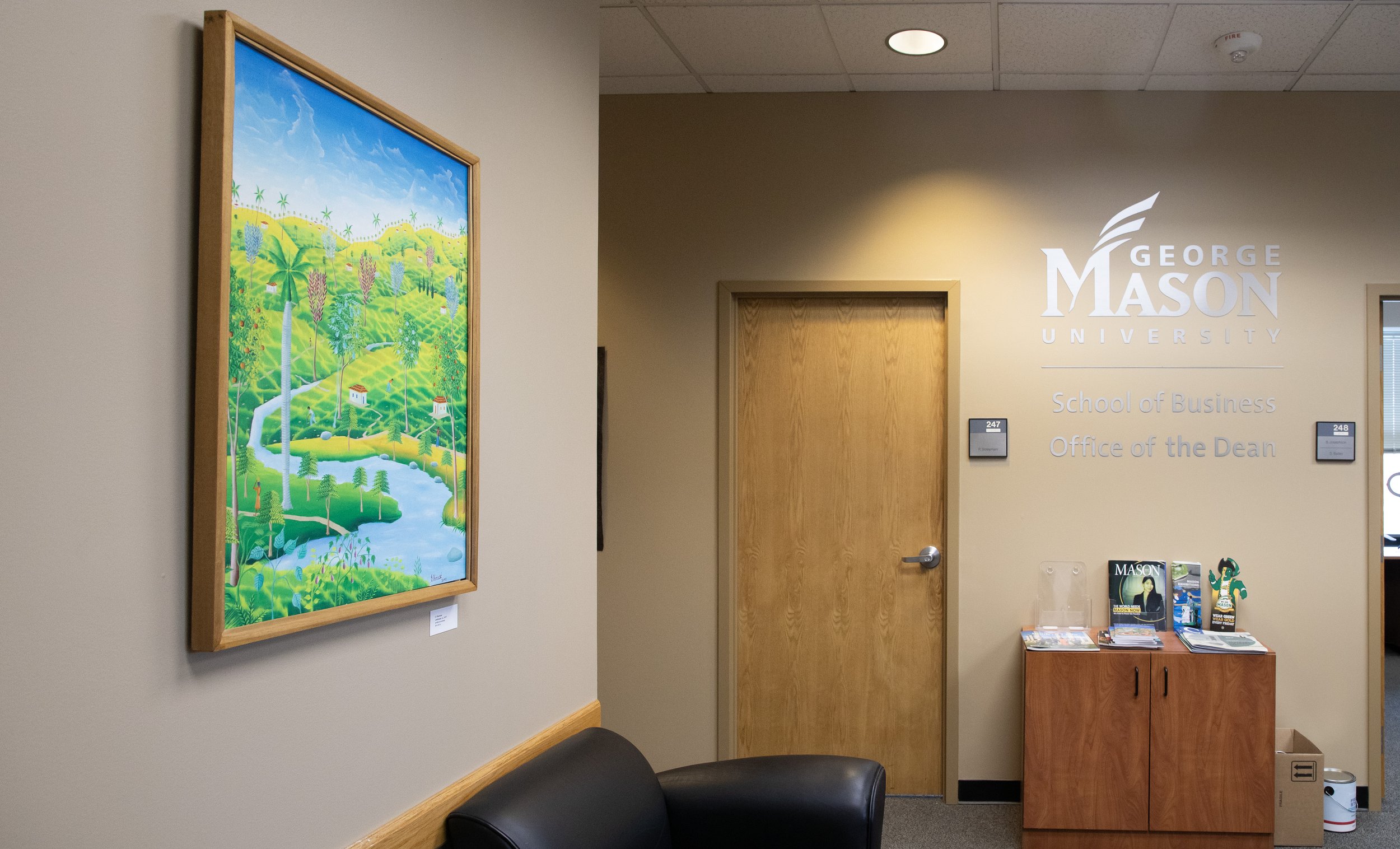
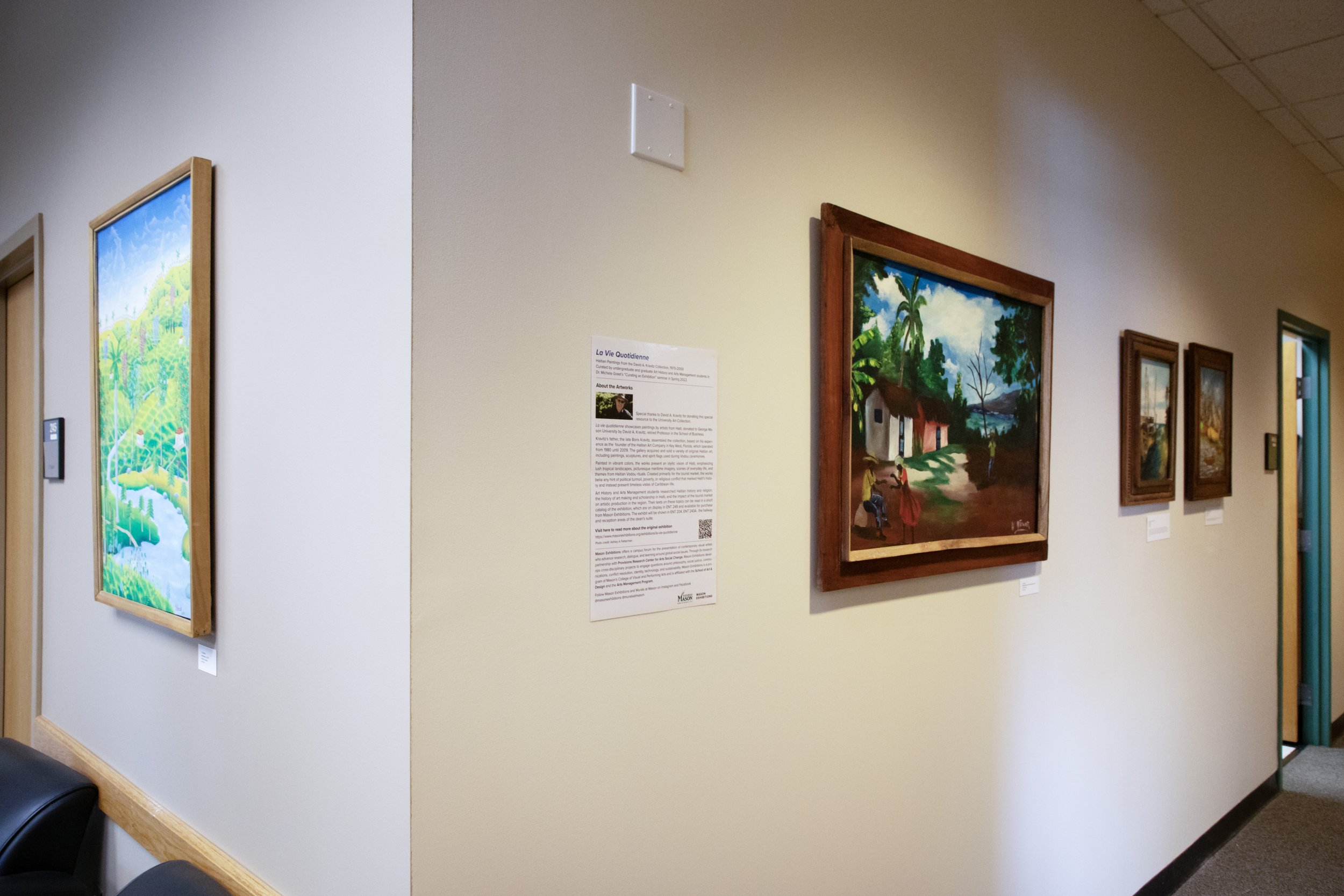
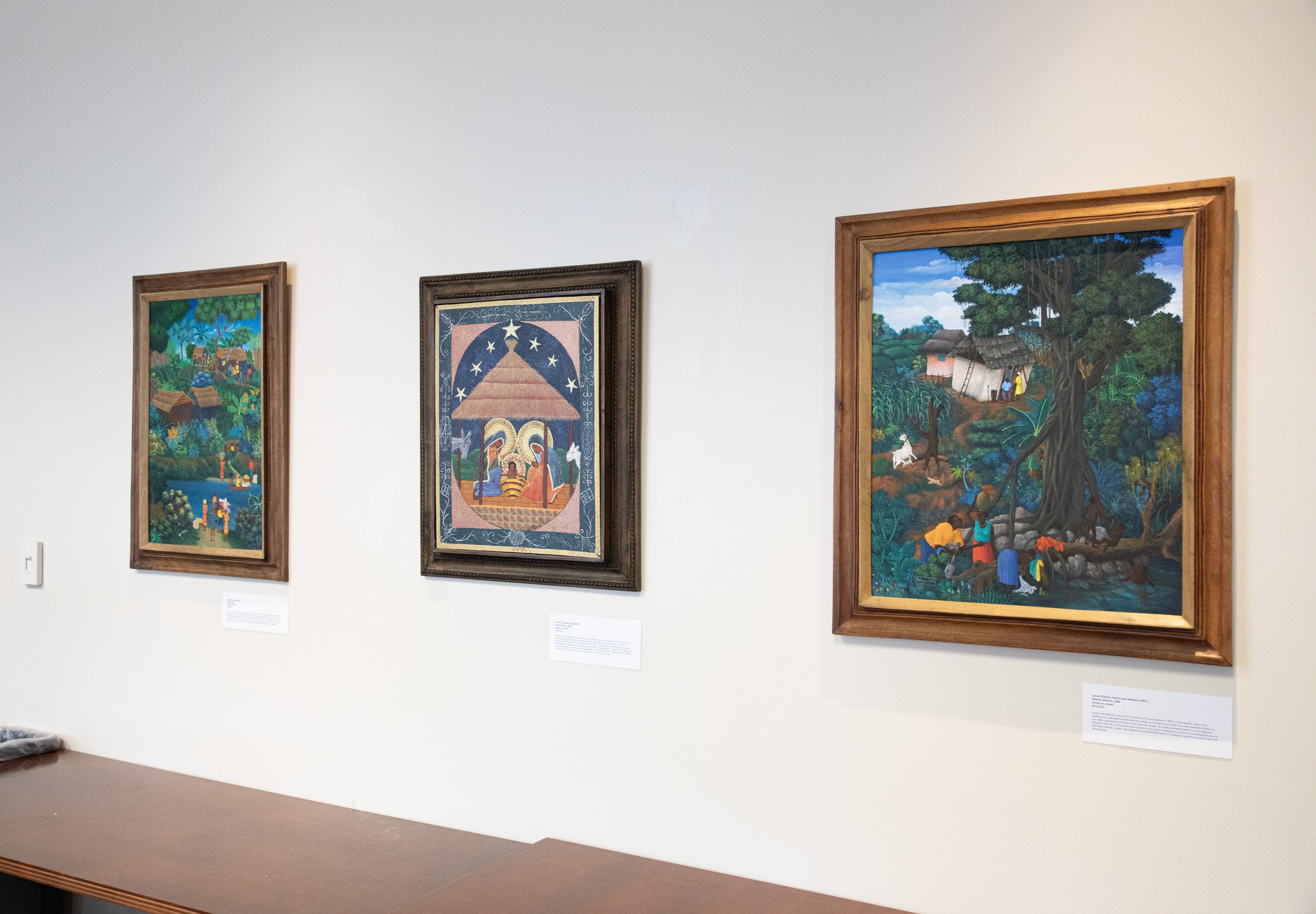
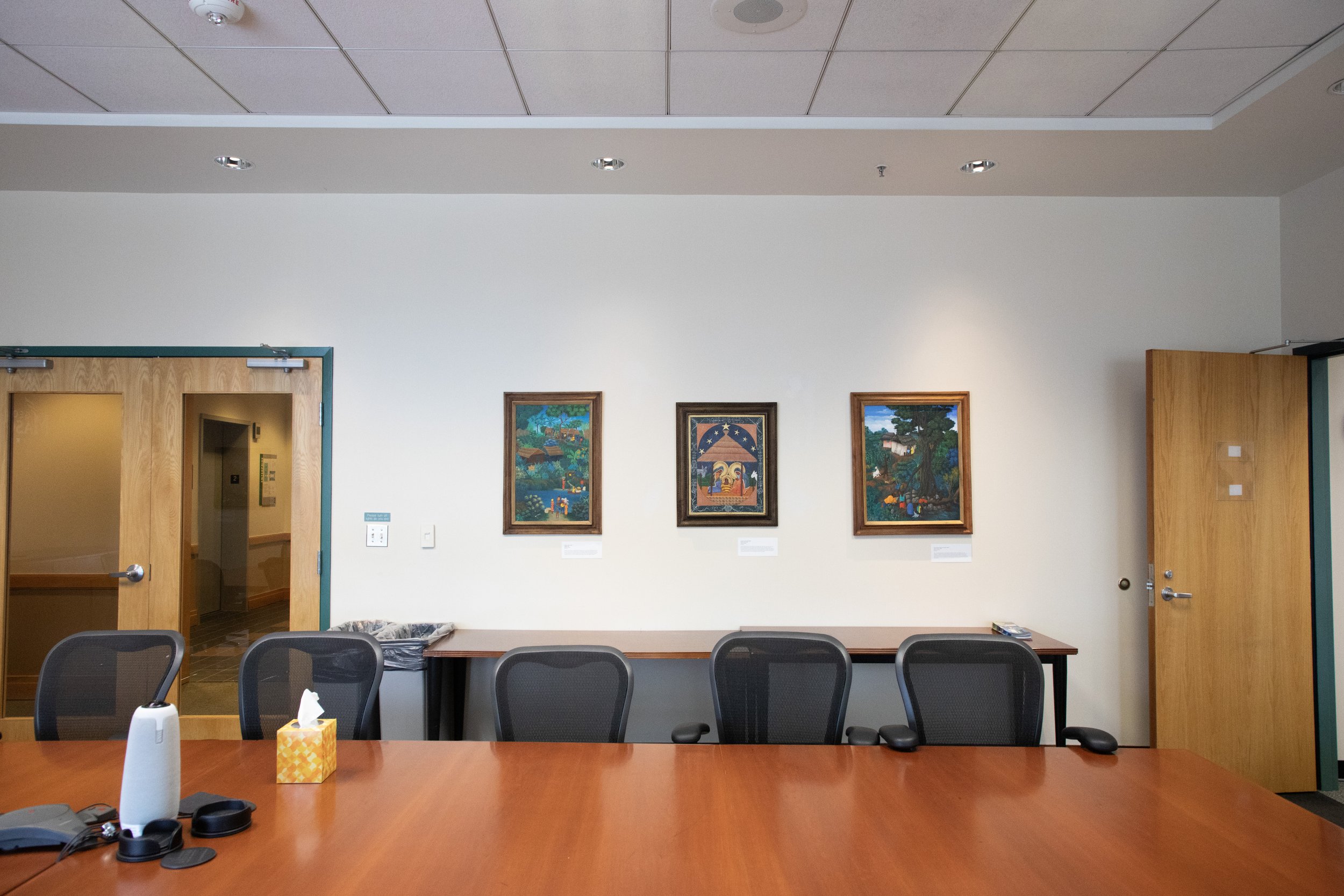
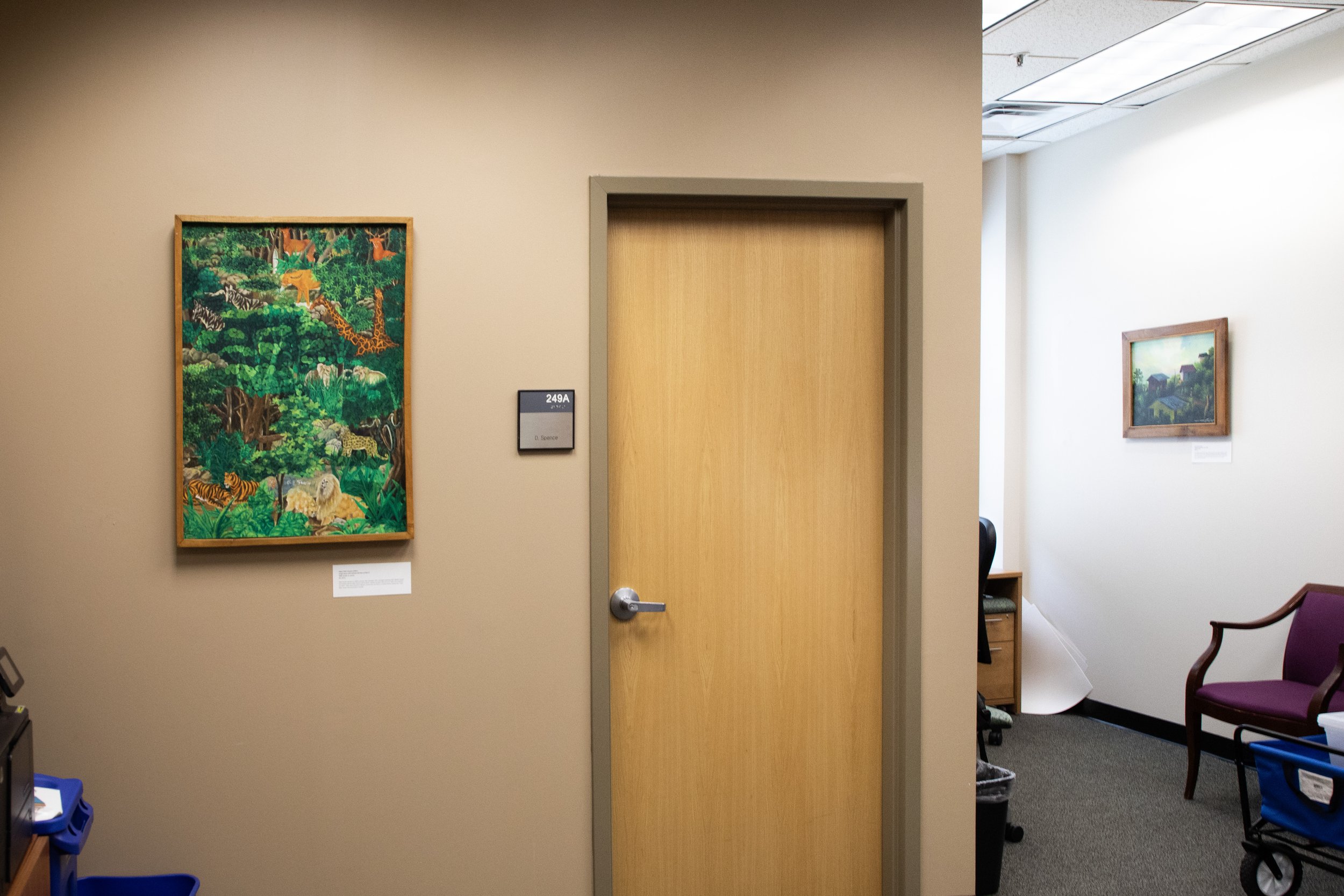
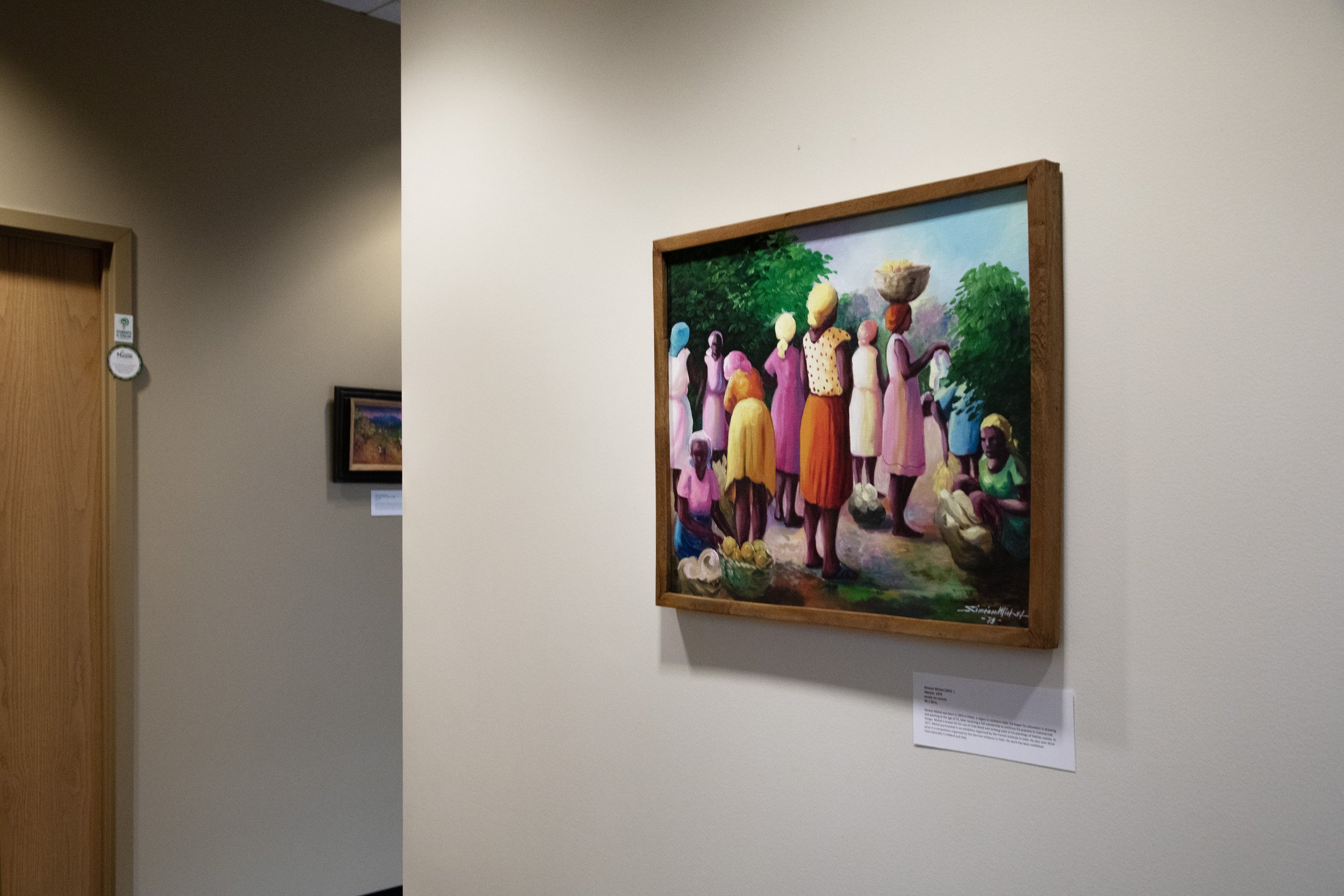
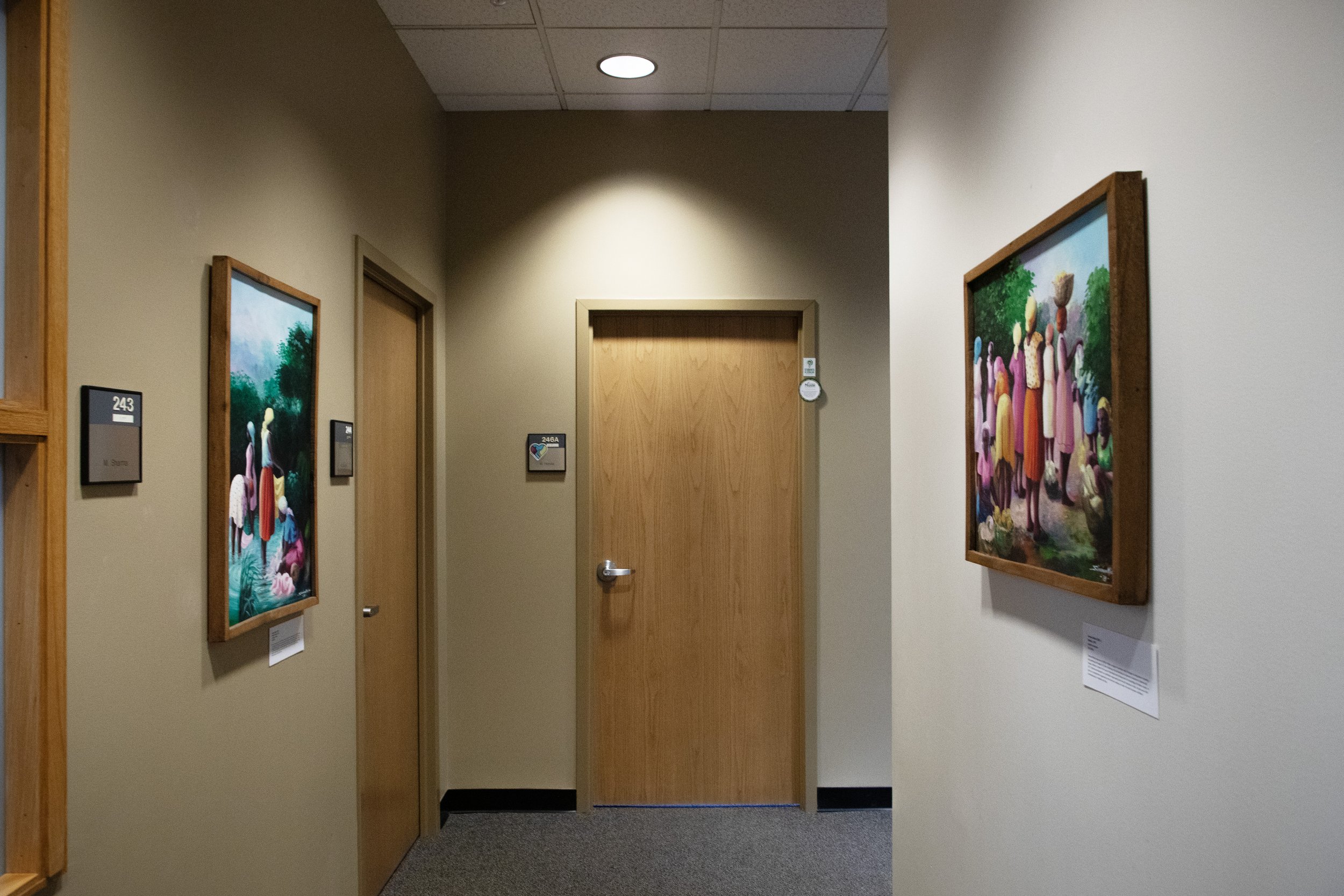
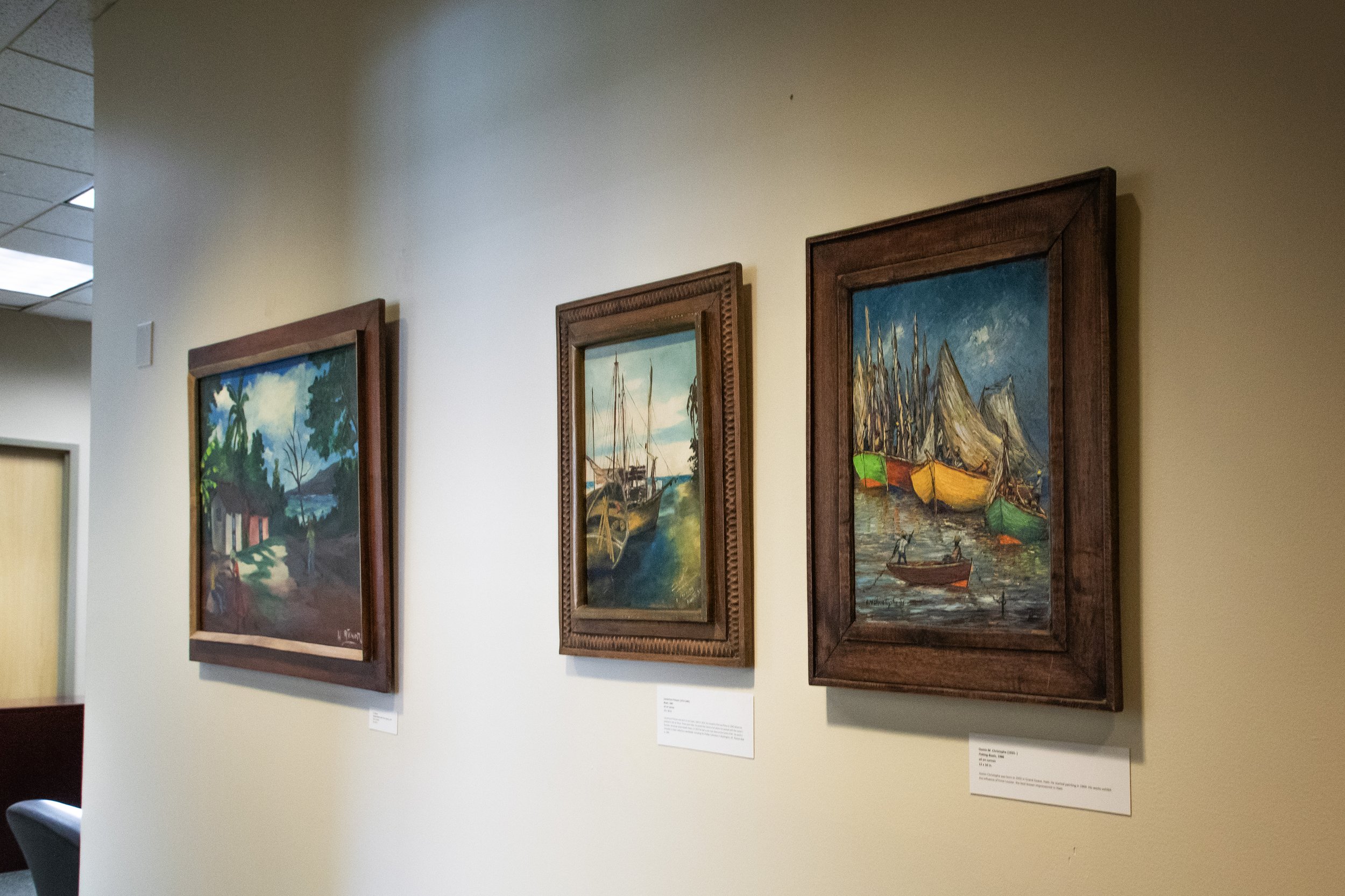
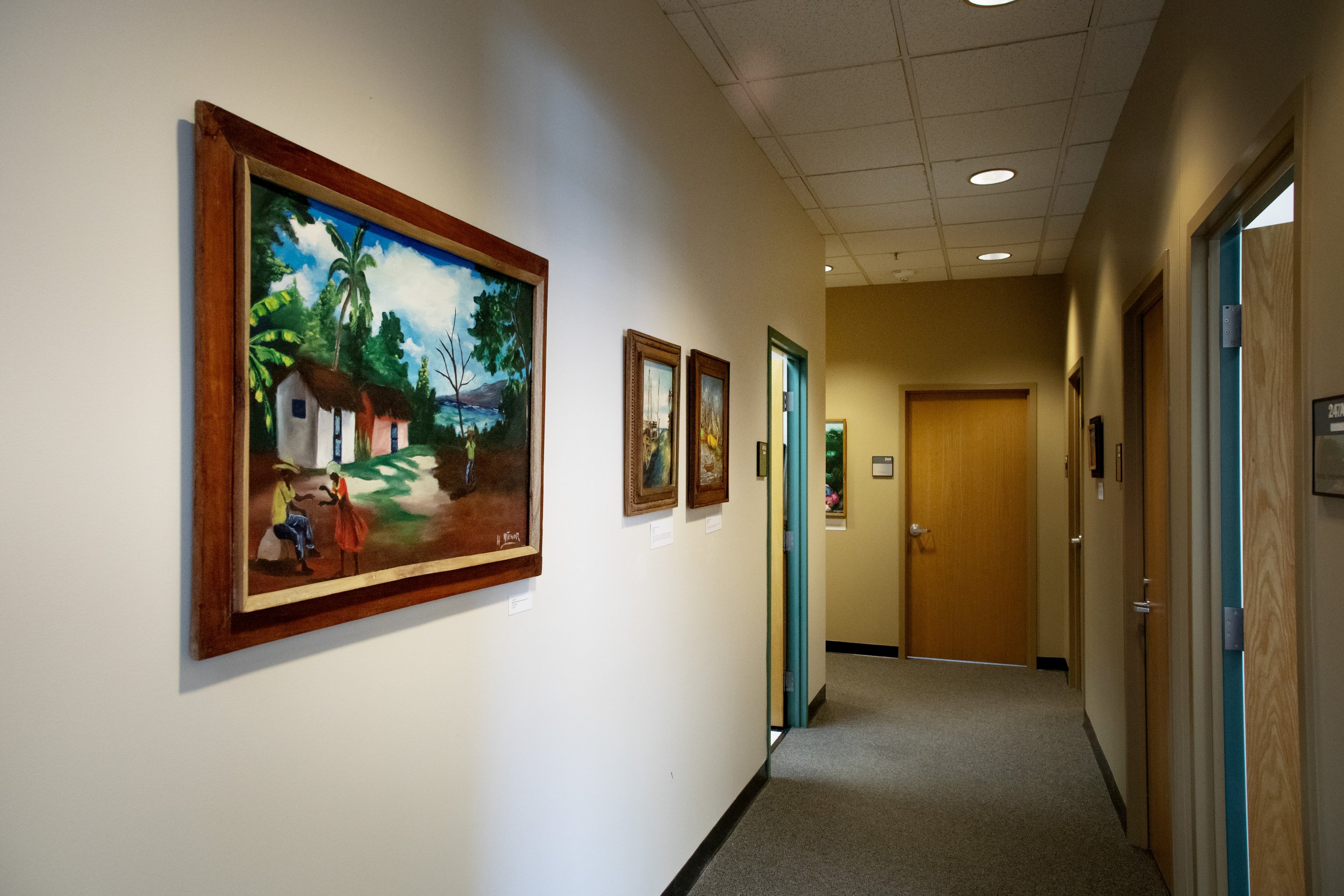
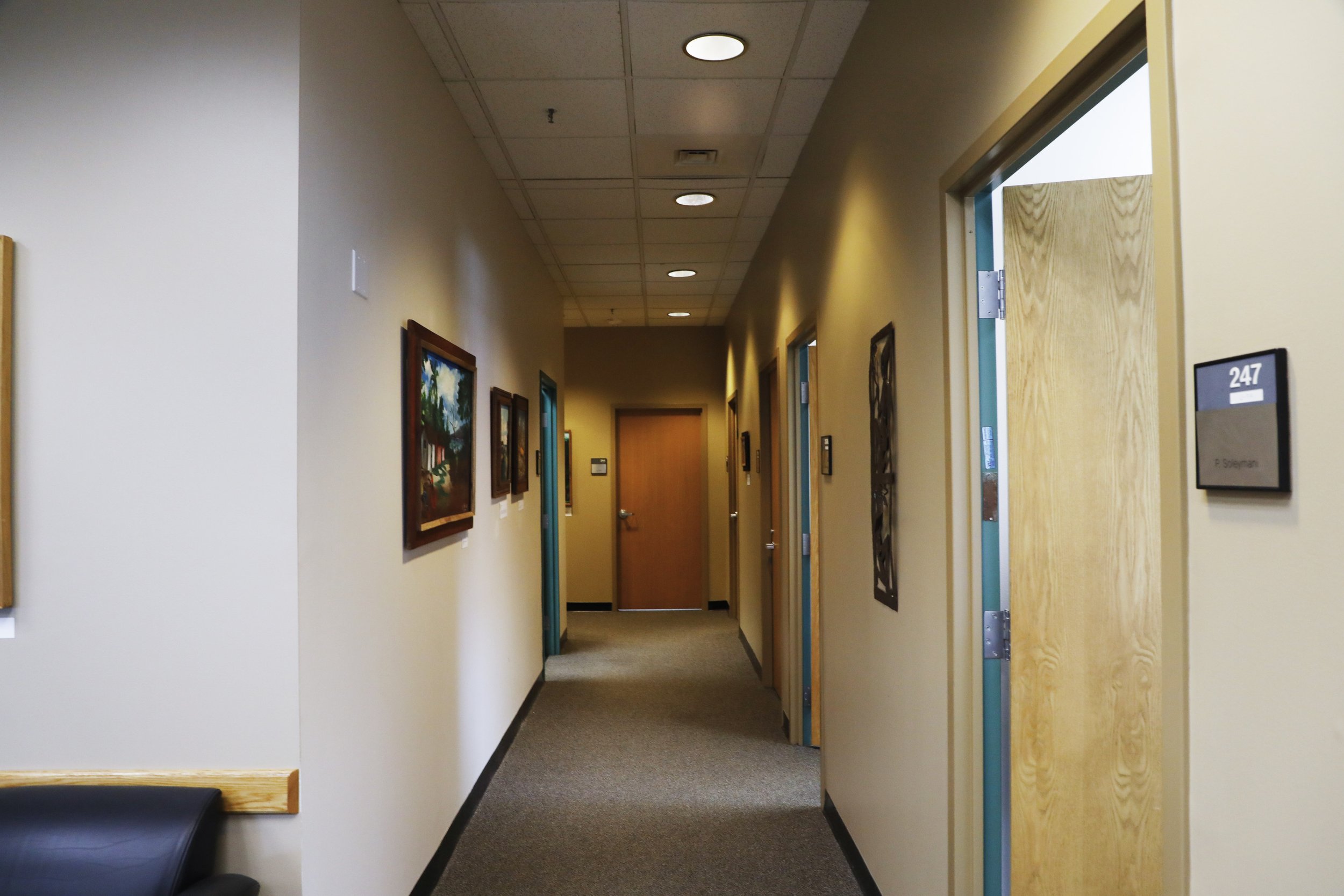
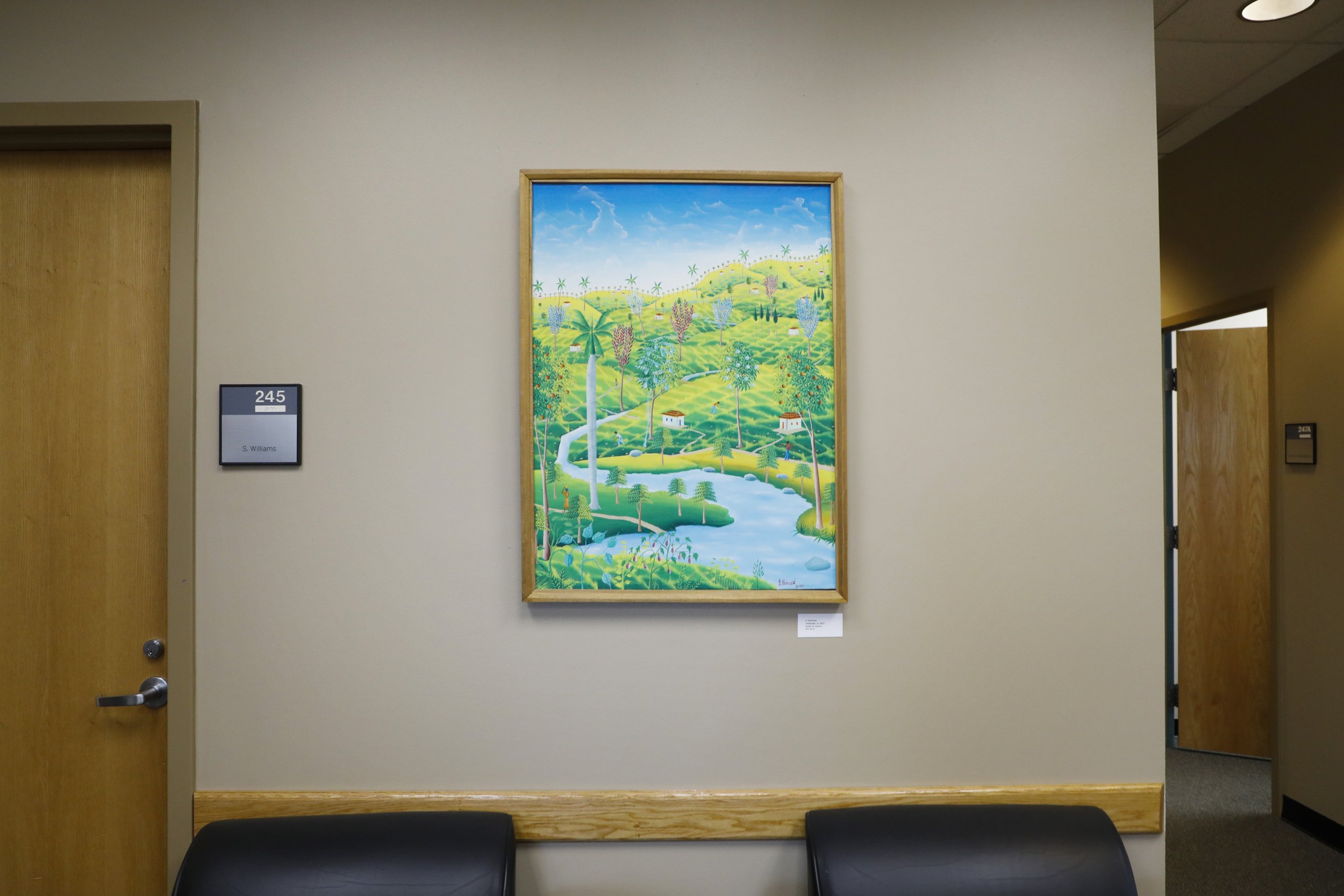
Costello College of Business
LA VIE QUOTIDIENNE: Haitian Paintings from the David A. Kravitz Collection
An interdisciplinary collaboration between the George Mason University - College of Visual and Performing Arts (MasonArts) and the George Mason University - School of Business is bringing business and the arts together in Enterprise Hall.
The exhibit, a collection of paintings by artists from Haiti, is on loan to the business school and was donated to the University Art Collection by School of Business Professor Emeritus David K.
The artwork is open for viewing by George Mason University students, alumni, faculty, and staff during normal business hours, Monday-Friday.
